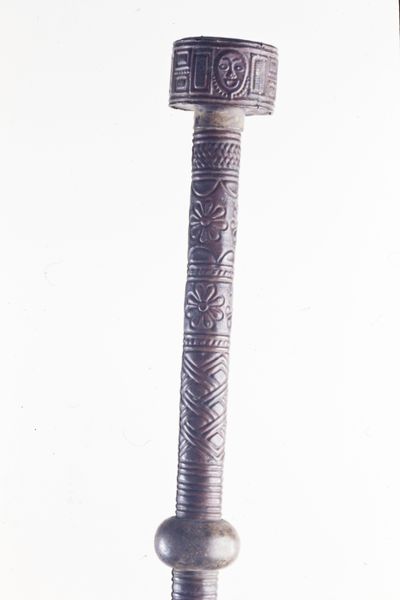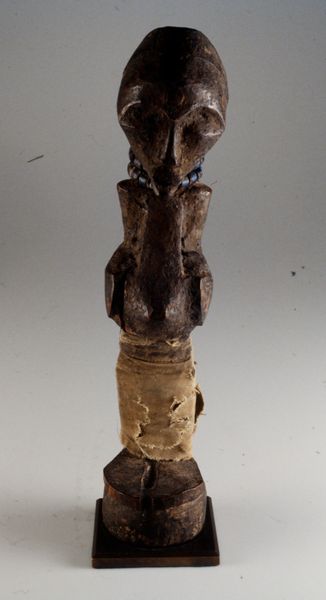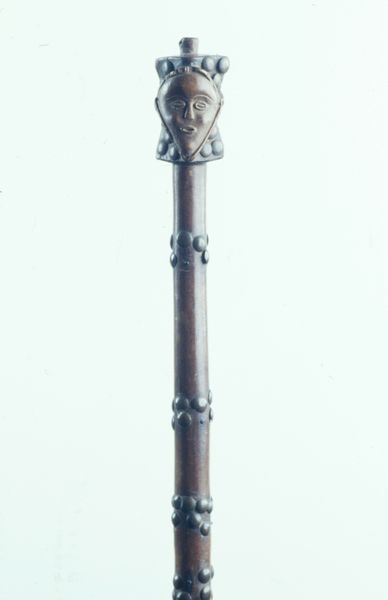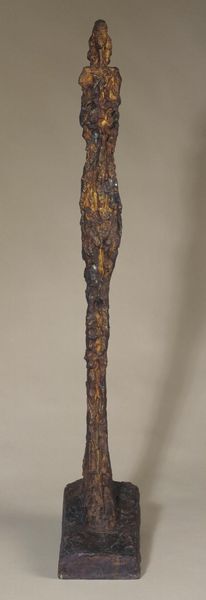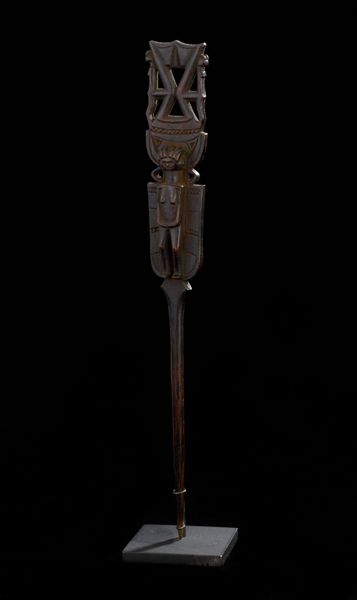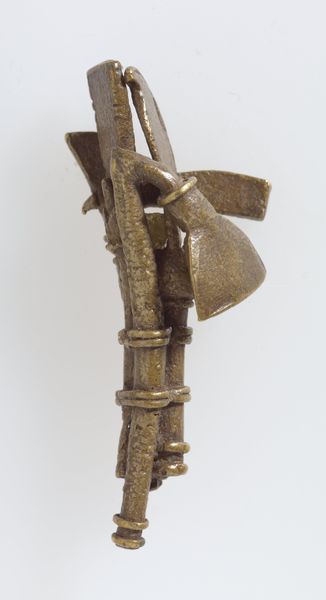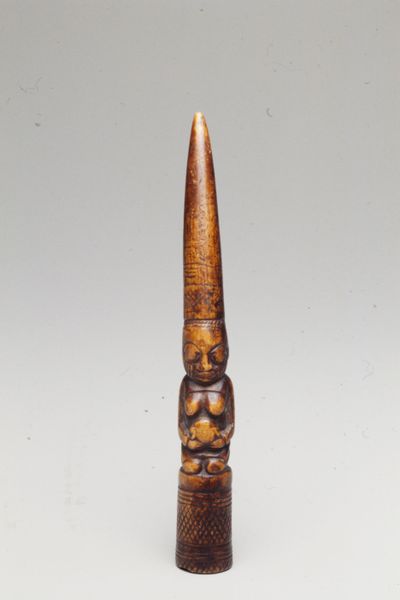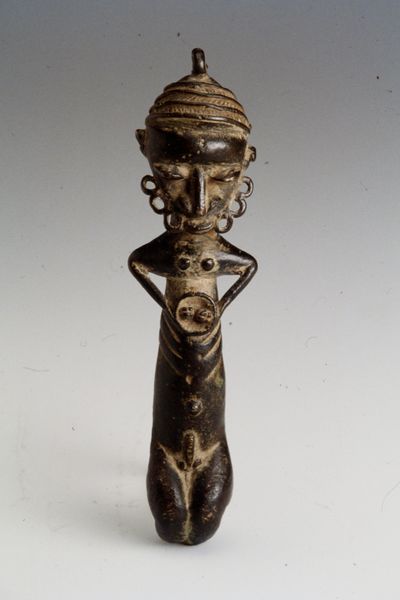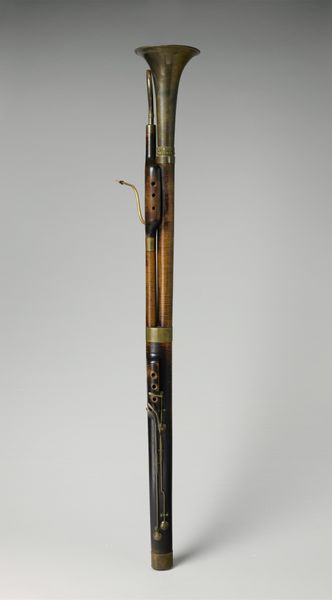
carving, wood
#
african-art
#
folk-art
#
carving
#
figuration
#
folk-art
#
ceramic
#
wood
Dimensions: 13 1/2 x 2 3/16 x 7 1/2 in. (34.29 x 5.56 x 19.05 cm)
Copyright: Public Domain
Curator: Let's talk about this "Pipe," created by the Bamum people around the late 19th century, held here at the Minneapolis Institute of Art. It’s primarily made of ceramic and wood. Editor: My first thought is that it feels surprisingly tactile, like something that was clearly made for use, but with a deliberate attention to craft and detail that elevates it. Curator: Precisely. The Bamum kingdom, located in present-day Cameroon, was known for its skilled artisans, who worked primarily for the royal court. Objects like this pipe served not only a practical purpose, but also reinforced social hierarchies. Editor: Absolutely, it’s important to remember the labor involved here. You have to consider who was afforded the leisure time to smoke from such a beautifully crafted object and who were the laborers making and cultivating its components. It certainly makes you wonder about the material origins and distribution networks present during this period. Curator: We see figural carving around the bowl of the pipe. The motifs likely hold symbolic significance connected to Bamum beliefs and cosmology. Objects such as this would often reinforce the political and spiritual authority of the elites. Editor: The connection between the earthy material and spiritual power is strong. And seeing something everyday rendered with this kind of deliberate, skilled artistry pushes back against a strict division between "art" and "craft." Someone made an object that has utility with beautiful sculpture on it. It prompts you to examine this cultural consumption that can blur high art and craft and that questions established production values. Curator: It's remarkable how this object encapsulates social history. From production, usage, to what it signifies. This is a look into Bamum culture. Editor: Agreed. This pipe, like all crafted items, acts as a potent symbol for how materiality shapes culture and vice-versa.
Comments
minneapolisinstituteofart almost 2 years ago
⋮
Elaborately decorated tobacco pipes of terra-cotta (baked clay), brass and wood were commonly used by men in all regions of Cameroon. The decoration of the pipe was an indication of the owner’s rank in the social and political hierarchy of his community.
Join the conversation
Join millions of artists and users on Artera today and experience the ultimate creative platform.
